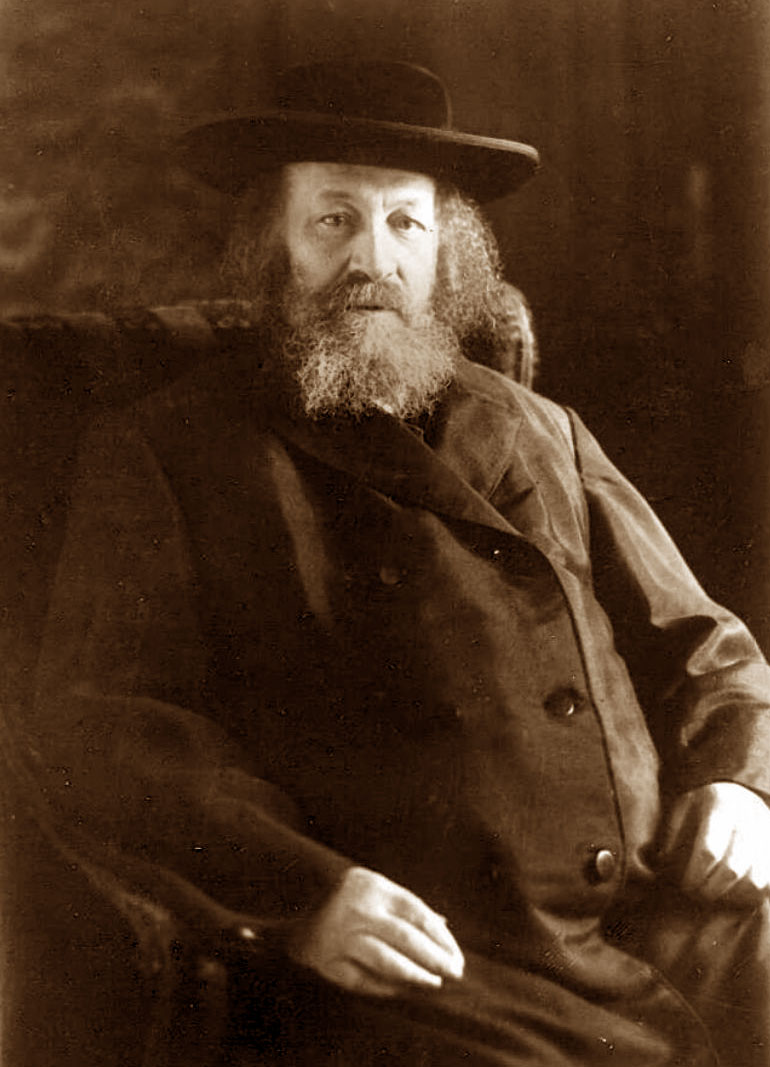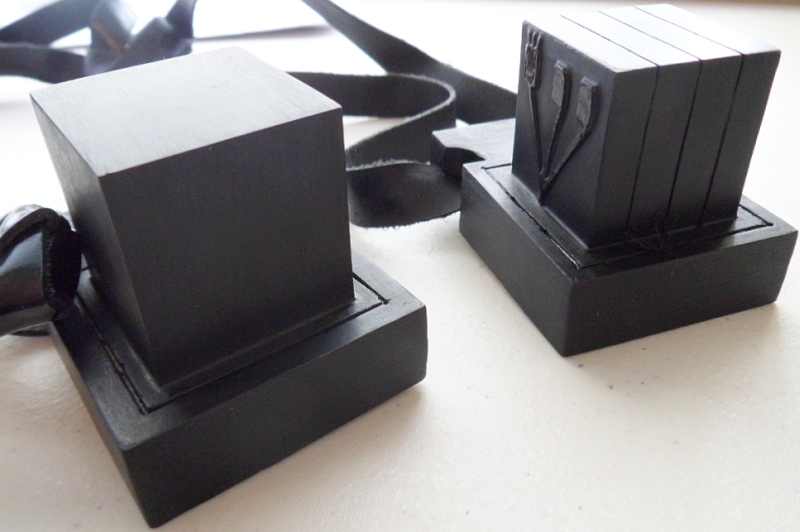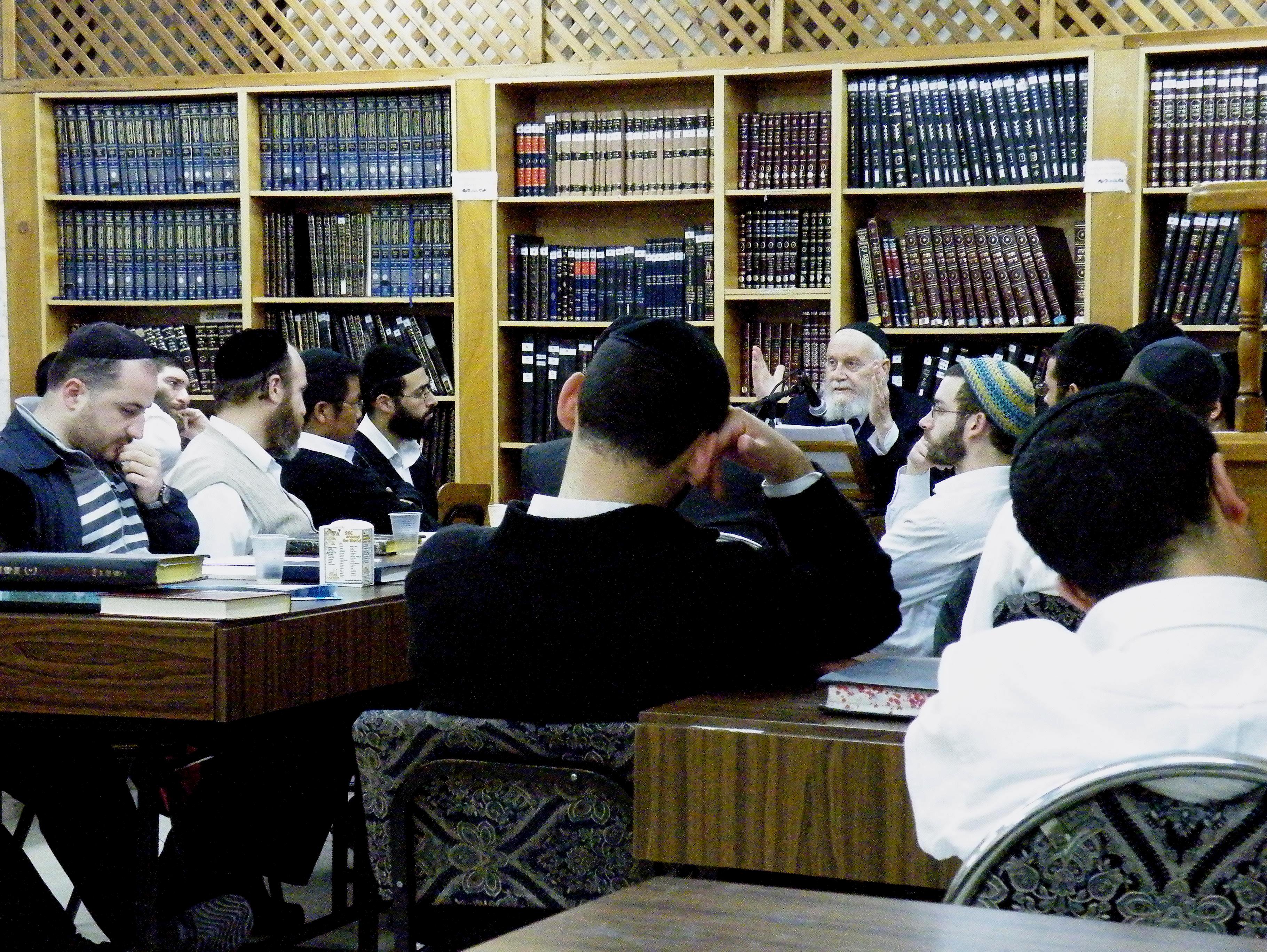|
Yisroel Moshe Dushinsky
Yisroel Moshe Dushinsky ( he, ישראל משה דושינסקי) (December 22, 1921 – March 26, 2003) also known as the Maharim, was the second Rebbe of the Dushinsky Hasidic dynasty of Jerusalem, Israel. He assumed the leadership of the Hasidut at the age of 28 upon the death of his father, Rabbi Yosef Tzvi Dushinsky, founder of the dynasty. He was also a member of the rabbinical court of the Edah HaChareidis for over 40 years, completing his tenure as the seventh chief rabbi of the Edah HaChareidis from 1996 to 2003. Early life Yisroel Moshe Dushinsky was the only child of Rabbi Yosef Tzvi Dushinsky and his second wife, Esther Neuhaus. His father was over 50 years old at the time of his birth. Yisrael Moshe was born in Chust, Ukraine, shortly after his father began serving as Rav of that city. He was named after his paternal grandfather, Yisroel, and his great uncle, Rabbi Moshe Schick (the ''Maharam Schick''). His father was very attached to him and brought him along w ... [...More Info...] [...Related Items...] OR: [Wikipedia] [Google] [Baidu] |
Dushinsky (Hasidic Dynasty)
Dushinsky is one of the few Hasidic dynasties not named after the place where it originated; instead, it is named after the surname of the Rebbe. It is a relatively new dynasty, as are many of the dynasties that originated in Hungary. However, the Dushinsky dynasty truly became a dynasty in Jerusalem, where it is centered today. It is not like other Hasidic groups, in that it does not originate from a Hasidic background, but from the ''talmidim'' (students) of the Chasam Sofer. Yosef Tzvi Dushinsky (1865-1948), the Maharitz The founder of the Dushinsky dynasty was Rabbi Yosef Tzvi Dushinsky, son of Rabbi Yisroel Dushinsky. He was a disciple of Rabbi Simcha Bunim Sofer (''Shevet Sofer''), one of the grandchildren of the Chasam Sofer. After his marriage to the daughter of Rabbi Mordechai Winkler, author of ''Levushei Mordechai'', Rabbi Dushinsky became the chief rabbi in Galanta, Slovakia. In an epidemic during the First World War, his first wife died childless, and he subsequent ... [...More Info...] [...Related Items...] OR: [Wikipedia] [Google] [Baidu] |
Mandatory Palestine
Mandatory Palestine ( ar, فلسطين الانتدابية '; he, פָּלֶשְׂתִּינָה (א״י) ', where "E.Y." indicates ''’Eretz Yiśrā’ēl'', the Land of Israel) was a geopolitical entity established between 1920 and 1948 in the region of Palestine under the terms of the League of Nations Mandate for Palestine. During the First World War (1914–1918), an Arab uprising against Ottoman rule and the British Empire's Egyptian Expeditionary Force under General Edmund Allenby drove the Ottoman Turks out of the Levant during the Sinai and Palestine Campaign. The United Kingdom had agreed in the McMahon–Hussein Correspondence that it would honour Arab independence if the Arabs revolted against the Ottoman Turks, but the two sides had different interpretations of this agreement, and in the end, the United Kingdom and France divided the area under the Sykes–Picot Agreementan act of betrayal in the eyes of the Arabs. Further complicating the issue was t ... [...More Info...] [...Related Items...] OR: [Wikipedia] [Google] [Baidu] |
Shulchan Arukh
The ''Shulchan Aruch'' ( he, שֻׁלְחָן עָרוּך , literally: "Set Table"), sometimes dubbed in English as the Code of Jewish Law, is the most widely consulted of the various legal codes in Judaism. It was authored in Safed (today in Israel) by Joseph Karo in 1563 and published in Venice two years later. Together with its commentaries, it is the most widely accepted compilation of Jewish law ever written. The ''halachic'' rulings in the ''Shulchan Aruch'' generally follow Sephardic law and customs, whereas Ashkenazi Jews generally follow the halachic rulings of Moses Isserles, whose glosses to the ''Shulchan Aruch'' note where the Sephardic and Ashkenazi customs differ. These glosses are widely referred to as the ''mappah'' (literally: the "tablecloth") to the ''Shulchan Aruch's'' "Set Table". Almost all published editions of the ''Shulchan Aruch'' include this gloss, and the term "Shulchan Aruch" has come to denote ''both'' Karo's work as well as Isserles', with Karo ... [...More Info...] [...Related Items...] OR: [Wikipedia] [Google] [Baidu] |
Tefillin
Tefillin (; Modern Hebrew language, Israeli Hebrew: / ; Ashkenazim, Ashkenazic pronunciation: ), or phylacteries, are a set of small black leather boxes with leather straps containing scrolls of parchment inscribed with verses from the Torah. Tefillin are worn by adult Jews during weekday morning prayers. In Orthodox Judaism, Orthodox and traditional communities, they are worn solely by men, while some Reform Judaism , Reform and Conservative Judaism, Conservative (Masorti) communities allow them to be worn by both men and women. By traditional Jewish Law (halacha), women are exempt from most time-dependent positive commandments. Although "tefillin" is technically the plural form (the singular being "tefillah"), it is often used as a singular as well. The arm-tefillah (or ''shel yad'' [literally "of the hand"]) is placed on the upper (non-dominant) arm, and the strap wrapped around the forelimb, hand and middle finger; while the head-tefillah (or ''shel rosh'' [literally "of the ... [...More Info...] [...Related Items...] OR: [Wikipedia] [Google] [Baidu] |
Tallit
A tallit ''talit'' in Modern Hebrew; ''tālēt'' in Sephardic Hebrew and Ladino language, Ladino; ''tallis'' in Ashkenazic Hebrew and Yiddish language, Yiddish. Mishnaic Hebrew, Mish. pl. טליות ''telayot''; Heb. pl. טליתות ''tallitot'' , Yidd. pl. טליתים ''talleisim''. is a fringed garment worn as a prayer shawl by religious Jews. The tallit has special twined and knotted Fringe (trim), fringes known as ''tzitzit'' attached to its four corners. The cloth part is known as the "beged" (lit. garment) and is usually made from wool or cotton, although silk is sometimes used for a tallit gadol. The term is, to an extent, ambiguous. It can refer either to the "tallit katan" (small tallit) item that can be worn over or under clothing and commonly referred to as "tzitzit", or to the "tallit gadol" (big tallit) Jewish prayer shawl worn over the outer clothes during the morning prayers (Shacharit) and worn during all prayers on Yom Kippur. The term "tallit" alone, usually r ... [...More Info...] [...Related Items...] OR: [Wikipedia] [Google] [Baidu] |
Shiur (Torah)
Shiur (, , lit. ''amount'', pl. shiurim ) is a lecture on any Torah topic, such as Gemara, Mishnah, Halakha (Jewish law), Tanakh (Bible), etc. History The Hebrew term שיעור ("designated amount") came to refer to a portion of Judaic text arranged for study on a particular occasion, such as a yartzeit, the dedication of a new home, or the evening of a holiday, and then to a public reading and explanation of the same. The act of teaching and studying these texts at the designated time was known in Yiddish as ''schiur lernen''. These shiurim would be attended by all classes of people; it was traditional for learned attendees to engage the lecturer in continuous discussion, and for the larger lay audience to listen intently. Concurrently, the word came to refer to the daily study quotient for students of a yeshiva, and then to the lecture given thereon. Akiva Eger, for example,would not miss learning a single ''shiur'' with the yeshiva. His ''shiurim'' with them were ... [...More Info...] [...Related Items...] OR: [Wikipedia] [Google] [Baidu] |
Semikhah
Semikhah ( he, סמיכה) is the traditional Jewish name for rabbinic ordination. The original ''semikhah'' was the formal "transmission of authority" from Moses through the generations. This form of ''semikhah'' ceased between 360 and 425 CE. Since then ''semikhah'' has continued in a less formal way. Throughout history there have been several attempts to reestablish the classical ''semikhah''. In recent times, some institutions grant ordination for the role of ''hazzan'' (cantor), extending the "investiture" granted there from the 1950s. Less commonly, since the 1990s, ordination is granted for the role of lay leader - sometimes titled '' darshan''. Ordination may then also be specifically termed , "rabbinical ordination", , "cantorial ordination", or , "maggidic ordination". The title of "rabbi" has "proliferated greatly over the last century". Nowadays ''Semikha'' is also granted for a limited form of ordination, focused on the application of Halakha in specific settin ... [...More Info...] [...Related Items...] OR: [Wikipedia] [Google] [Baidu] |
Shmuel HaNavi Street
Shmuel HaNavi Street ( he, רחוב שמואל הנביא, lit. Samuel the Prophet Street) is a main road in north-central Jerusalem. It starts at the intersection of St. George and Shivtei Israel Streets near Highway 60, and merges into Golda Meir Boulevard ( Route 436) just past the intersection of Bar-Ilan and Hativat Harel Streets. The continuation of the street winds up to the tomb of Samuel the prophet, after whom the street is named. Shmuel HaNavi Street borders the Beit Yisrael, Bukharim, Arzei HaBira, Shmuel HaNavi, Sanhedria and Gush 80 neighborhoods. With a largely Haredi population, the street houses major synagogues for two Hasidic dynasties and many Haredi schools, yeshivas, and girls' seminaries. Name The street is named after Samuel the prophet (11th century BC), the last Biblical judge, who anointed both SaulI Samuel 15:1 and DavidI Samuel 16:12–13 as kings of Israel. The Tomb of Samuel, which rests atop the tallest mountain outside the Jerusalem ... [...More Info...] [...Related Items...] OR: [Wikipedia] [Google] [Baidu] |
Yeshiva
A yeshiva (; he, ישיבה, , sitting; pl. , or ) is a traditional Jewish educational institution focused on the study of Rabbinic literature, primarily the Talmud and halacha (Jewish law), while Torah and Jewish philosophy are studied in parallel. The studying is usually done through daily ''shiurim'' (lectures or classes) as well as in study pairs called '' chavrusas'' (Aramaic for 'friendship' or 'companionship'). ''Chavrusa''-style learning is one of the unique features of the yeshiva. In the United States and Israel, different levels of yeshiva education have different names. In the United States, elementary-school students enroll in a ''cheder'', post- bar mitzvah-age students learn in a ''metivta'', and undergraduate-level students learn in a ''beit midrash'' or ''yeshiva gedola'' ( he, ישיבה גדולה, , large yeshiva' or 'great yeshiva). In Israel, elementary-school students enroll in a ''Talmud Torah'' or ''cheder'', post-bar mitzvah-age students l ... [...More Info...] [...Related Items...] OR: [Wikipedia] [Google] [Baidu] |
Talmud Torah
Talmud Torah ( he, תלמוד תורה, lit. 'Study of the Torah') schools were created in the Jewish world, both Ashkenazic and Sephardic, as a form of religious school for boys of modest backgrounds, where they were given an elementary education in Hebrew, the scriptures (especially the Torah), and the Talmud (and ''halakha''). This was meant to prepare them for ''yeshiva'' or, particularly in the movement's modern form, for Jewish education at a high school level. The Talmud Torah was modeled after the ''cheder'', a traditional form of schooling whose essential elements it incorporated, with changes appropriate to its public form rather than the ''cheder's'' private financing through less formal or institutionalized mechanisms, including tuition fees and donations. In the United States, the term ''Talmud Torah'' refers to the afternoon program for boys and girls after attending public school. This form of Jewish education was prevalent from the mid–19th century through "the ... [...More Info...] [...Related Items...] OR: [Wikipedia] [Google] [Baidu] |
Jaffa
Jaffa, in Hebrew Yafo ( he, יָפוֹ, ) and in Arabic Yafa ( ar, يَافَا) and also called Japho or Joppa, the southern and oldest part of Tel Aviv-Yafo, is an ancient port city in Israel. Jaffa is known for its association with the biblical stories of Jonah, Solomon and Saint Peter as well as the mythological story of Andromeda and Perseus, and later for its oranges. Today, Jaffa is one of Israel's mixed cities, with approximately 37% of the city being Arab. Etymology The town was mentioned in Egyptian sources and the Amarna letters as ''Yapu''. Mythology says that it is named for Yafet (Japheth), one of the sons of Noah, the one who built it after the Flood. The Hellenist tradition links the name to ''Iopeia'', or Cassiopeia, mother of Andromeda. An outcropping of rocks near the harbor is reputed to have been the place where Andromeda was rescued by Perseus. Pliny the Elder associated the name with Iopa, daughter of Aeolus, god of the wind. The medieval Ara ... [...More Info...] [...Related Items...] OR: [Wikipedia] [Google] [Baidu] |







